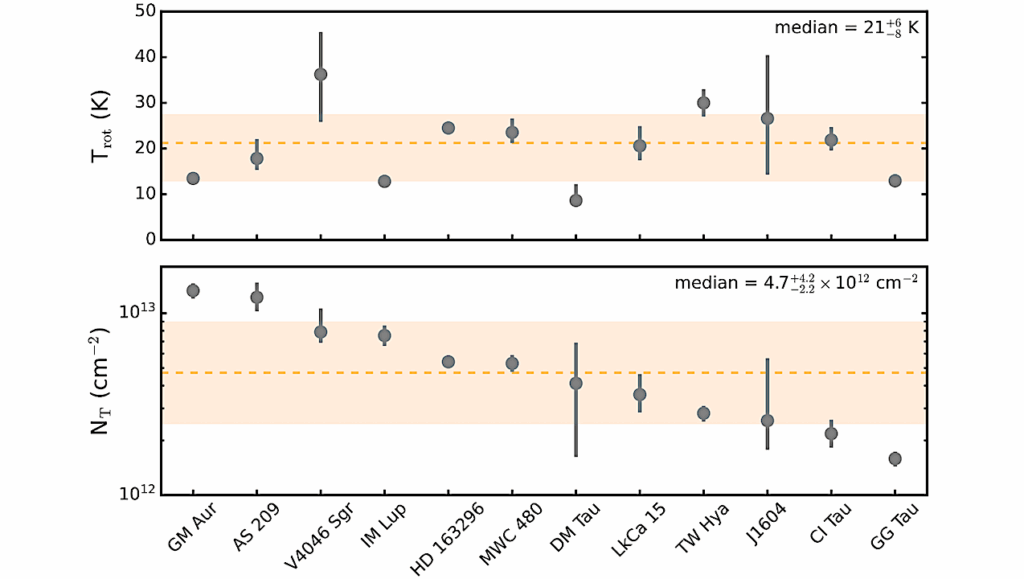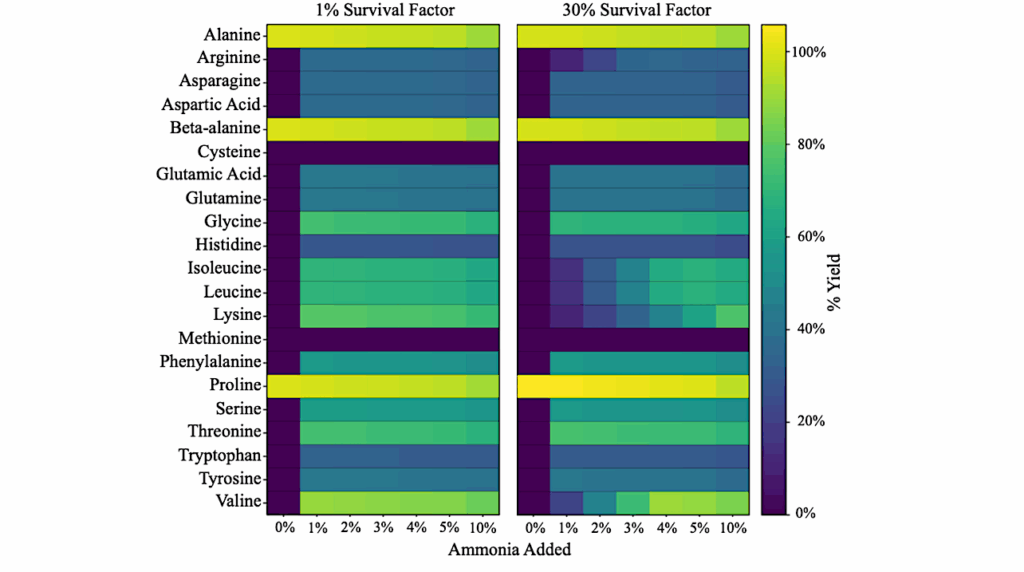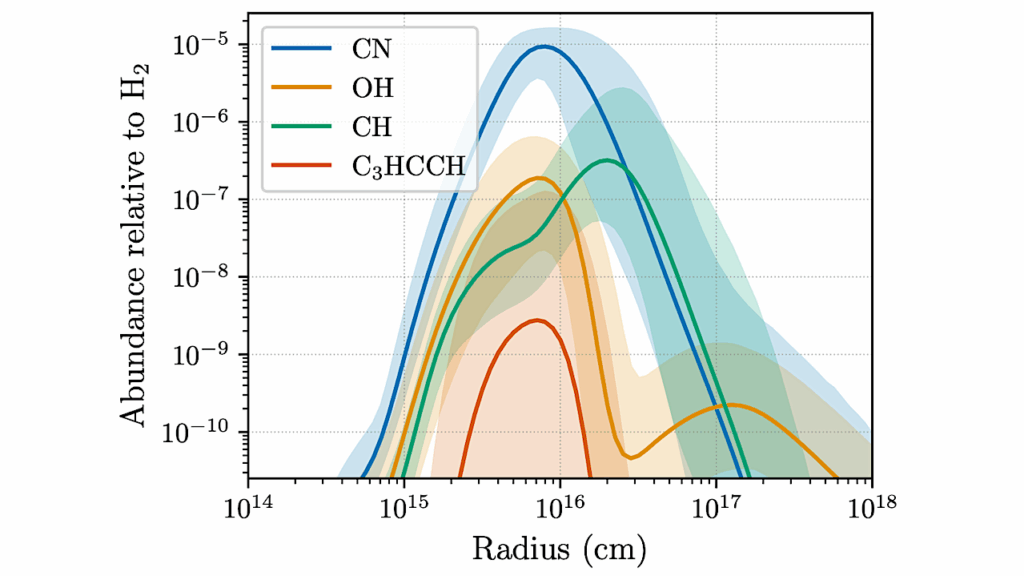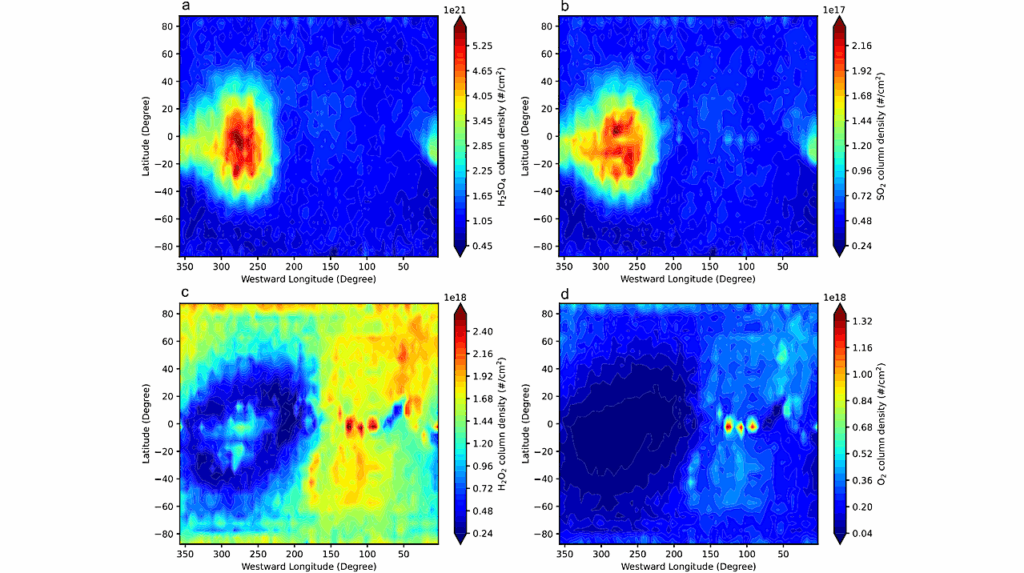Warm Dust Surface Chemistry in Protoplanetary Disks. Formation of Phyllosilicates

The origin of the reservoirs of water on Earth is debated. The Earth’s crust may contain at least three times more water than the oceans.
This crust water is found in the form of phyllosilicates, whose origin probably differs from that of the oceans. We test the possibility to form phyllosilicates in protoplanetary disks, which can be the building blocks of terrestrial planets. We developed an exploratory rate-based warm surface chemistry model where water from the gas-phase can chemisorb on dust grain surfaces and subsequently diffuse into the silicate cores.
We apply the phyllosilicate formation model to a zero-dimensional chemical model and to a 2D protoplanetary disk model (ProDiMo). The disk model includes in addition to the cold and warm surface chemistry continuum and line radiative transfer, photoprocesses (photodissociation, photoionization, and photodesorption), gas-phase cold and warm chemistry including three-body reactions, and detailed thermal balance. Despite the high energy barrier for water chemisorption on silicate grain surfaces and for diffusion into the core, the chemisorption sites at the surfaces can be occupied by a hydroxyl bond (-OH) at all gas and dust temperatures from 80 to 700 K for a gas density of 2E4 cm^-3.
The chemisorption sites in the silicate cores are occupied at temperatures between 250 and 700 K. At higher temperatures thermal desorption of chemisorbed water occurs. The occupation efficiency is only limited by the maximum water uptake of the silicate. The timescales for complete hydration are at most 1E5 years for 1 mm radius grains at a gas density of 1E8 cm^-3. Phyllosilicates can be formed on dust grains at the dust coagulation stage in protoplanetary disks within 1 Myr. It is however not clear whether the amount of phyllosilicate formed by warm surface chemistry is sufficient compared to that found in Solar System objects.
W. F. Thi, S. Hocuk, I. Kamp, P. Woitke, Ch. Rab, S. Cazaux, P. Caselli, M. D’Angelo
(Submitted on 11 Dec 2018)
Comments: accepted to A&A
Subjects: Astrophysics of Galaxies (astro-ph.GA)
Cite as: arXiv:1812.04357 [astro-ph.GA] (or arXiv:1812.04357v1 [astro-ph.GA] for this version)
Submission history
From: Wing-Fai Thi
[v1] Tue, 11 Dec 2018 12:36:38 UTC (1,732 KB)
https://arxiv.org/abs/1812.04357
Astrobiology, Astrochemistry








